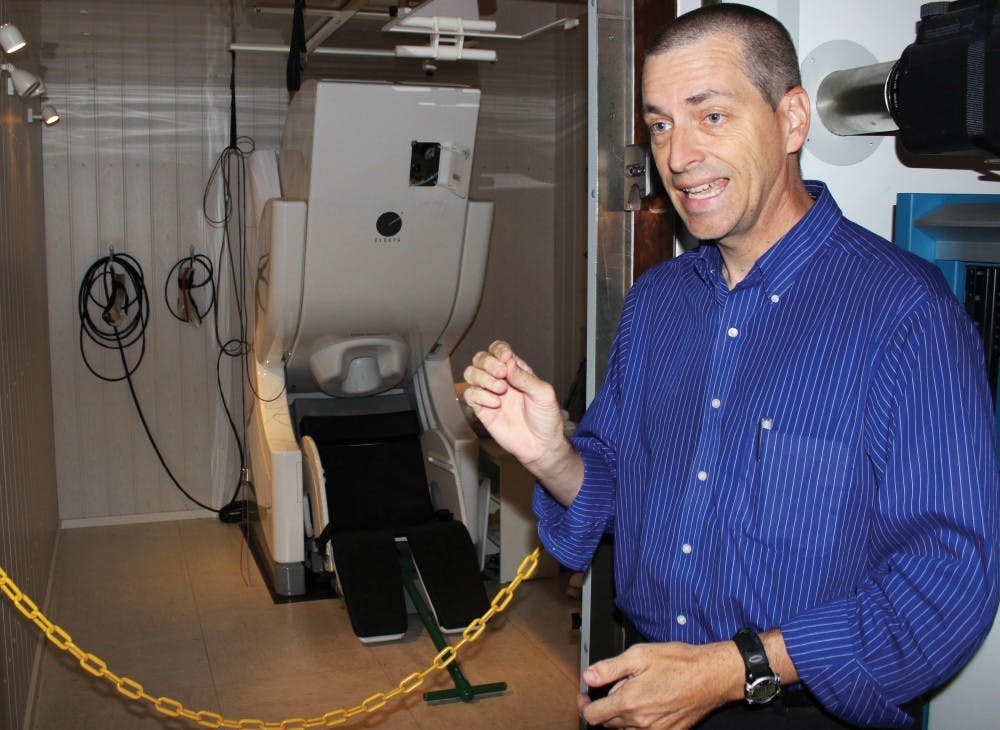The Mind Research Network at UNM is beginning to study adolescent brain development, and is being funded by a program that strives to create employment opportunities while also conducting research projects.
Vince Calhoun, professor of electrical computer engineering and executive science officer at the Mind Research Network, said he is the principal investigator for a new $5.9 million research grant from the Experimental Program to Stimulate Competitive Research.
The four-year project, which started Aug. 1, will begin scanning child participants in October, he said.
“The goal is to look at a rapidly changing period of time, the adolescent period between the ages of 9 and 14 years old,” Calhoun said. “(We want to) really try to understand what’s going on in the brain in terms of all the different changes that are occurring.”
EPSCoR is an initiative of the National Science Foundation (NSF) that aims to bring funding to states that are considered underfunded by the NSF, including New Mexico, Calhoun said.
“It’s about building local resources around a project that can then sustain themselves beyond the life of the project, to help investigators that have interests in those areas,” he said. “You know, providing support and resources for them.”
As part of the NSF grant is workforce development, Calhoun said the study will employ undergraduate and graduate students as well as junior faculty. The aim is to train students, while supporting junior faculty to have research projects based in these different states.
“We’re bringing people together around a common research domain that’s actually a very rich, complex area of research, with lots of things that you can study and do, he said. “The goal is to really light a spark, so to speak, in these states, that can then start a fire and grow into lots of other different research programs.”
Calhoun said that UNM, being the leader on the project, teamed up with other EPSCoR entities at the University of Nebraska and Tulane University in Louisiana, “so it’s really a three state initiative.”
Barnaly Rashid, a Ph.D. candidate in the Department of Electrical and Computer Engineering at UNM, is working on the project under the supervision of Calhoun.
Rashid said the main idea of the research is to explore the brain’s functional network connectivity, with approaches that capture time-varying properties. This approach will offer better characterization and understanding of brain functions.
The result of these studies will help develop methods of finding biological markers, she said, in order to diagnose mental illness such as autism and attention-deficit/hyperactivity disorder (ADHD) at an early stage.
Get content from The Daily Lobo delivered to your inbox
“Neurological disorders are serious issues that not only impact the mental health of a person but also affects personal, social and professional aspects,” Rashid said. “I believe this research work will greatly change the diagnostic methods in brain studies as well as in biomedical sciences in general.”
Calhoun said they have several devices and approaches to help them study young brains over time. On the smallest scale, they have a device called Magneto Encephalography (MEG), which measures magnetic field changes produced by bundles of neurons firing in the brain.
“You can get really precise timing from that, you can look at how the brain is oscillating and how that changes over time,” he said.
He said the team also uses MRIs to look at “blood flow phenomena,” which is when neurons fire and you get a blood flow response to those areas.
“You can see precisely throughout the brain, where those blood flow changes occur,” Calhoun said.
A third aspect of the research is called epigenetics — instead of looking at the sequence of DNA, they are looking at methylation, which is attached to the DNA and can come on or off over time.
“We’ve got all those pieces of information and we’ve got lots of sophisticated approaches that we’ve proposed to really data mine all those different techniques,” he said. “To look at not only how things are changing within one individual but how they change within that individual over time.”
It will be an exercise in patience for the team; all kids that participate in the study will be scanned at two different times, returning two years after the initial scan.
“So we’ll have these longitudinal studies that we can look at the adolescent brain basically, over those time periods,” Calhoun said.
In addition to surveying each individual modality, he said they are also placing focus on “data fusion,” which is combining all the research data together and looking at combinations of changes that occur.
“We’re pretty much on the cutting edge, in terms of the modeling what we’re doing, those techniques can be translated to lots of other areas,” Calhoun said, saying the study will be one of the first of its kind concerning brain development, using longitudinal imaging analysis and MEG.
“Once we learn and can characterize the adolescent brain, then we can start to look at when things go wrong in future studies,” Calhoun said.
Matthew Reisen is a senior reporter for the Daily Lobo. He can be reached at news@dailylobo.com or on Twitter @DailyLobo.






